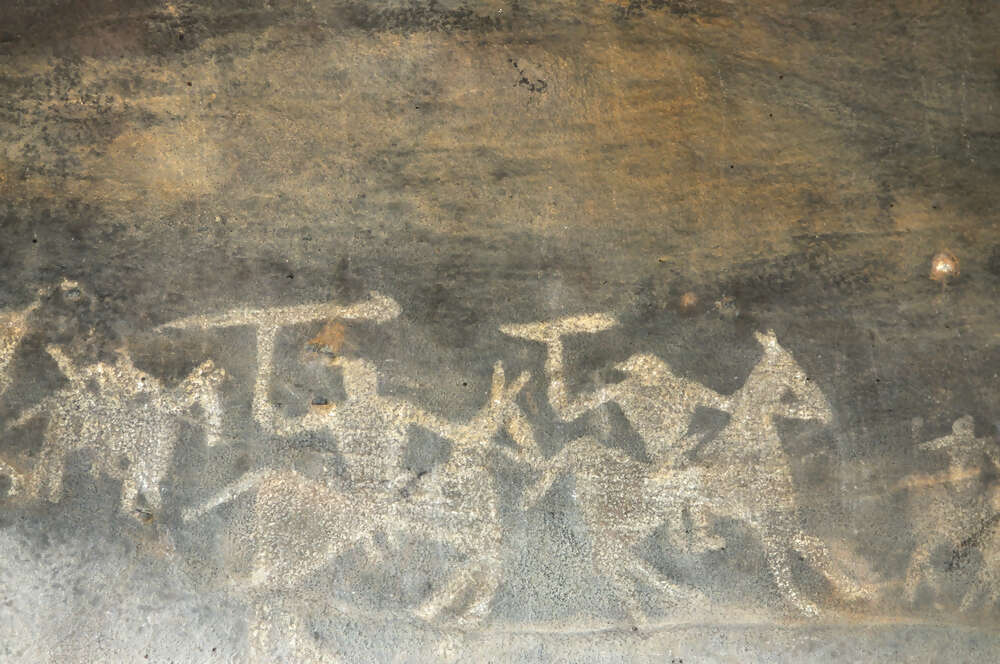The Bhimbetka is a reflection of interaction between humans and landscape for a many years. It is closely associated with hunter-gatherer communities of the yesteryears as the rock art found here demonstrates. This theory is further strengthened by the presence of Adivasi villages on the site’s periphery.
The Bhimbetka is a reflection of interaction between humans and landscape for a many years. It is closely associated with hunter-gatherer communities of the yesteryears as the rock art found here demonstrates. This theory is further strengthened by the presence of Adivasi villages on the site’s periphery.
History
- 1867 – Rock paintings are discovered in Uttar Pradesh
- 1888 – The Bhimbetka site got its first mention as a Buddhist site due to the information acquired from the local Adivasis
- 1957 – The Site is discovered by V.S. Wakankar
- 1971 – 2 Shelters are excavated by Bajpai, Pandey and Gour.
- 1972 – A wider survey is carried out from Kari Talai to Joara by Wakankar. In this survey, he identified over 700 shelters. About 243 of the 700 are part of the Bhimbetka group. The other shelters are in the Lakha Juar Group and 178 shelters are spread around the 2 hills.
- 1972 to 1977 – Excavations during this time were conducted by Wakanakar, Misra and Hass and they revealed a sequence of Stone Age culture that spread from late Acheulian to the late Mesolithic periods. The remains of Chacolithic pottery showcases contact between the ancient dwellers of Bhimbetka and the neighboring Chacolithic man.
The chronology of the evolution of the people who dwelt here have been established, however, more work needs to be done to derive a more detailed chronology. Since no ethnographic work has been done on the rock shelters and the surrounding villages, major conclusions cannot yet be drawn. This is not to say that you cannot visit the site.
The UNESCO listed Bhimbetka rock shelters are found within the Vindhyan Hills in an area that features heavily sculpted sandstone rock formations clustering around the Bhimbetka Hill. Notable is the abundance sources of natural resources such as the perennial waters supplies, the natural shelters, the diverse flora and fauna etc. These natural resources seem to have played a major part in ensuring survival of the ancient societies.
You are well advised to visit this site and get a chance to see how the Stone Age people of Asia used to live and sustain their livelihoods.



